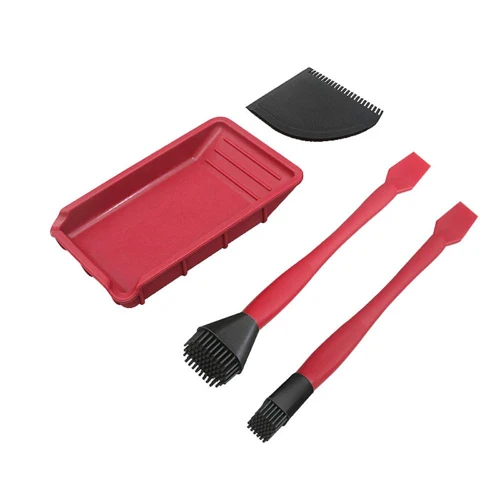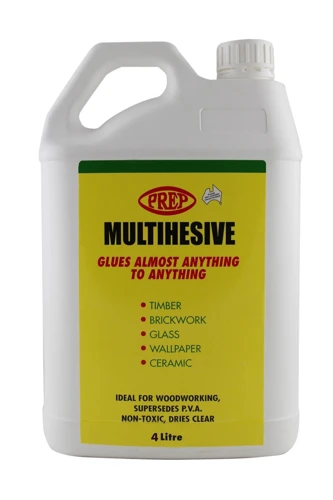Renovating your home can be an invigorating process, especially when it involves updating your flooring. However, the challenge often lies in dealing with the remnants of previous installations. One such challenge is figuring out how to get tile glue off floor surfaces. A clean and smooth base is crucial for the new flooring to adhere correctly and look its best.
Importance of Removing Tile Adhesive
Leaving old adhesive can lead to uneven surfaces, compromising the integrity and aesthetics of your new floor. Therefore, understanding how to remove tile glue is essential for DIY enthusiasts and professionals alike.
Types of Tile Adhesive
Before you embark on this task, it’s important to identify the type of adhesive used. Common types include thin-set mortar, mastic, and epoxy. Each has its own set of removal techniques that ensure effectiveness while maintaining the condition of your subfloor.
Preparation Before Removing Tile Glue
Start by clearing the area of furniture and debris. Gather the necessary tools and safety gear, such as gloves and masks, to protect yourself from dust and chemical exposure. Ensure proper ventilation if you plan to use chemical removers.
How to Remove Tile Glue from Different Types of Floors
How to Get Tile Glue Off Wood Floor
Wooden floors require a delicate touch. Heat application through a heat gun can soften the glue, allowing you to gently scrape it off with a putty knife. Be cautious not to damage the wood underneath.
Remove Tile Glue from Concrete
Concrete floors can withstand more aggressive methods. A floor grinder or a heavy-duty scraper can be used to remove tile glue from concrete surfaces. Dust reduction systems are essential to maintain a clean working environment.
How to Remove Adhesive from Floor Tiles
If you’re dealing with leftover adhesive on the tiles themselves, a solvent-based remover can be applied to dissolve the glue. Test a small area first to ensure it doesn’t damage the tile’s surface.
Methods for Tile Glue Removal
Manual Tile Glue Removal Techniques
For those who prefer a hands-on approach, manual scraping is the most straightforward method. A floor scraper with a sharp blade can be used to lift and remove the adhesive. This technique requires elbow grease and patience.
Using Heat to Remove Floor Tile Glue
Heat is a powerful ally when softening and removing tile adhesive. A heat gun or steamer can be especially useful on sensitive surfaces, as it helps to loosen the glue without the need for harsh chemicals or excessive force.
Chemical Floor Tile Glue Remover Options
Chemical removers can be effective for stubborn adhesives. These products are designed to break down the glue’s bonding agents, making it easier to scrape away. It’s crucial to follow the manufacturer’s instructions and safety guidelines when using these products.
How to Remove Old Tile Adhesive from the Floor
Softening Old Adhesive for Easier Removal
Old tile adhesive often requires additional effort to remove. Applying a solution designed to soften the glue can make the scraping process more manageable. Ensure the softener does not seep into any cracks or openings to avoid damaging the subfloor.
Scraping and Grinding to Remove Aged Tile Glue
Once the old adhesive is softened, a combination of scraping and grinding might be necessary. Mechanical grinders equipped with diamond-tipped blades can be particularly effective for this purpose.
Final Steps: Cleaning the Floor After Tile Glue Removal
Neutralizing Chemical Remnants
After removing the glue, it’s important to neutralize any leftover chemical residue. A thorough washing with water and a mild detergent should be conducted to ensure no traces are left behind.
Ensuring a Clean and Smooth Surface
The final goal is to achieve a clean and smooth surface that’s ready for new flooring. Sanding down any remaining rough spots and filling in gaps or cracks will provide the best foundation for your new tiles or other flooring materials.
Maintenance Tips After Removing Tile Adhesive
- Regularly inspect the floor for any signs of residual adhesive that may have been overlooked.
- Keep the area clean and dry to prevent any new adhesive from sticking to the floor.
- Consider sealing the floor to protect it from moisture and make future renovations easier.
Embarking on a DIY project and need to tackle the sticky situation of removing tile glue? Whether you’re dealing with walls, floors, or specific materials, we’ve got you covered. For helpful tips on getting that stubborn tile glue off your walls, check out our guide on how to get tile glue off walls. If you’ve found glue residue on your tiles after removal, our article on how to get glue off tile can provide you with the solutions you need. And for those working with concrete surfaces, don’t miss our insights on how to get tile glue off concrete. Equip yourself with the right knowledge to make your flooring project a smooth success!
Conclusion: The Importance of Proper Tile Glue Removal
Removing tile glue from floors may seem daunting, but it’s an essential step in the flooring renovation process. Proper removal ensures a solid foundation for new installations and helps maintain the longevity and beauty of your floors. With the right techniques and tools, you can successfully tackle this task and pave the way for a stunning floor transformation.


